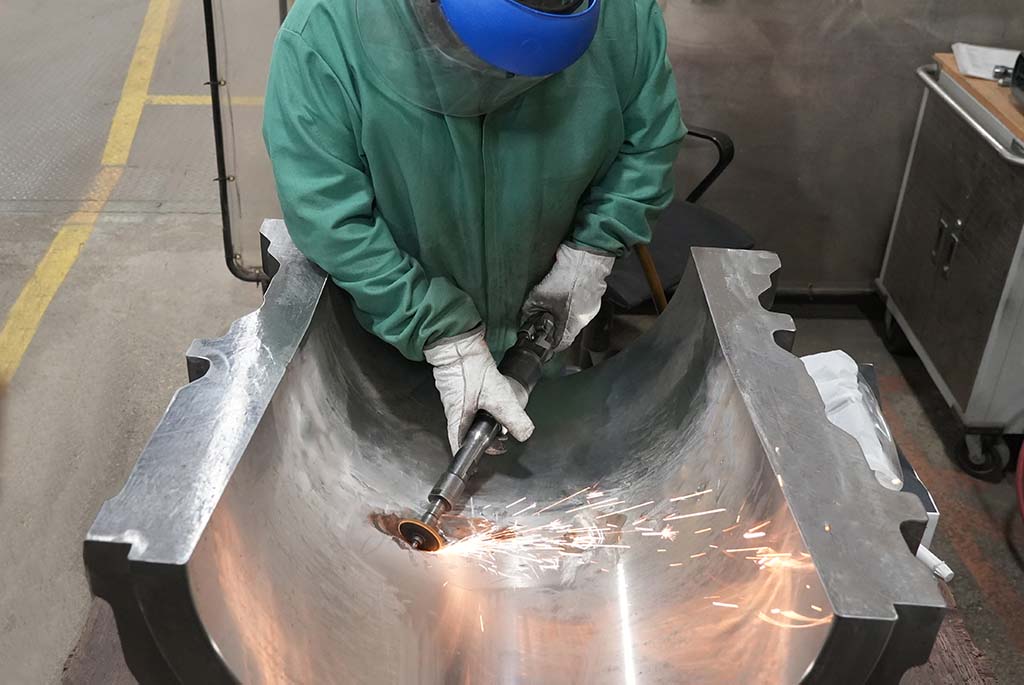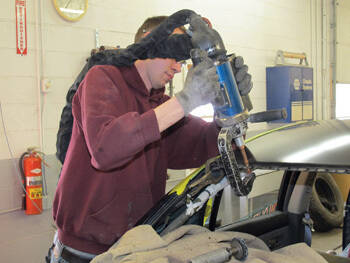Everything about Welding: Trick Insights Into Techniques and Ideal Practices for Success
Welding incorporates a range of methods, each fit for certain products and applications. Recognizing these techniques, such as GMAW, SMAW, and TIG, is vital for attaining ideal results. In addition, the best equipment and safety and security methods can not be forgotten. As prep work and repairing play important functions in the welding procedure, understanding these components can considerably boost the quality of the end product. What are the essential aspects that ensure a successful weld?
Recognizing Various Welding Techniques
Welding methods incorporate a variety of methods, each matched to details applications and products. Among the most common strategies are Gas Metal Arc Welding (GMAW), Shielded Metal Arc Welding (SMAW), and Tungsten Inert Gas Welding (TIG) GMAW, additionally known as MIG welding, is popular for its speed and adaptability, making it excellent for slim materials. SMAW, or stick welding, is preferred for its simplicity and performance in outside settings, specifically with thicker steels. TIG welding provides precision and control, making it suitable for intricate work and non-ferrous metals (Montana Mobile Welding and Repair Belgrade Fabrication). Each technique has its unique advantages and factors to consider, allowing welders to choose the most effective technique based upon the job's requirements, material kind, and wanted results. Understanding these methods is necessary for successful welding
Crucial Welding Devices and Tools
While different welding strategies call for particular skills, the appropriate tools and devices are equally necessary for accomplishing quality outcomes. Vital welding equipment consists of welding machines, which differ depending upon the strategy-- such as MIG, TIG, or stick welding. Safety equipment, consisting of gloves, safety helmets, and aprons, warranties safety and comfort during the process. In enhancement, clamps and components help safeguard products in position, guaranteeing precision in welds. Consumables like welding poles, cable, and securing gas are likewise essential parts that affect the top quality of the weld. Tools such as cutters and grinders assist in surface preparation and post-weld ending up, contributing to a professional outcome. Purchasing top notch tools eventually improves the efficiency and performance of welding tasks.
Safety Practices in Welding
Appropriate security methods are vital in the welding industry to safeguard employees from possible hazards. Welders have to put on ideal personal protective tools (PPE), consisting of headgears with proper shading, gloves, and flame-resistant clothing. Sufficient air flow is crucial to decrease exposure to dangerous fumes and gases produced throughout the welding process. In addition, employees must be trained in the correct handling of welding equipment to prevent accidents. Fire security steps, such as keeping combustible materials far from the welding area and having fire extinguishers readily offered, are essential. Routine assessments of devices and work spaces can assist determine prospective risks before they result in crashes. By sticking to these safety practices, welders can create a more secure working atmosphere and lessen risks connected with their trade.
Readying Products for Welding
Preparing products for welding is a crucial step that considerably affects the quality and stability of the end product (Fabrication). Proper prep work includes cleansing the surface areas to get rid of impurities such as dirt, corrosion, and oil, which can endanger the weld. Strategies such as grinding, fining sand, or utilizing solvents are typically used to attain a tidy surface area. Furthermore, making certain that the products mesh well is essential; spaces can bring about weak welds. It's also essential to think about the placement and positioning of the parts, as this will certainly impact the simplicity of welding and the last end result. Choosing the appropriate filler material and guaranteeing compatibility with the base metals is necessary for attaining solid, long lasting welds.
Tips for Getting High-Quality Welds
Attaining premium welds requires attention to detail and adherence to finest practices throughout the welding procedure. Appropriate joint preparation is essential, making sure surface areas are free and clean from impurities. Picking the proper filler material and welding strategy based on the base steels is vital for suitable bonding. Maintaining consistent travel rate and angle while welding can stop defects and advertise uniformity. Furthermore, regulating warm input is necessary; too much warm can lead to warping and compromised joints. Frequently inspecting the welds throughout the procedure permits instant adjustments if needed. Using suitable post-weld treatments, such as cleaning and stress relief, can boost the longevity and honesty of the weld, inevitably guaranteeing a successful outcome.
Repairing Usual Welding Issues
Welding typically offers obstacles that can impact the top quality and honesty of the end product. Typical concerns such as porosity, irregular weld grains, and getting too hot can develop, each requiring certain repairing techniques. Comprehending these issues is essential for welders to boost their abilities and attain excellent results.
Porosity Issues Described
Although porosity can usually be ignored, it stays an important problem in welding that can jeopardize the integrity of a completed product. Porosity describes the presence of little gas pockets within the weld grain, which can damage the joint and lead to premature failing. This trouble usually occurs from impurities, wetness, or incorrect protecting gas insurance coverage throughout the welding process. To reduce porosity, welders ought to verify that the base materials are completely dry and clean, make use of suitable shielding gases, and keep constant welding specifications. Routinely checking the tools and atmosphere can additionally aid determine potential concerns before they materialize in the weld. Attending to porosity properly is necessary for accomplishing solid, durable welds that satisfy high quality criteria.

Inconsistent Weld Beans
Inconsistent weld grains can greatly affect the top quality and toughness of a completed item. Various factors contribute to this issue, including incorrect travel rate, inaccurate amperage settings, and inconsistent electrode angles. When the welder relocates also promptly, a grain may show up narrow and do not have infiltration, while moving too gradually can trigger excessive accumulation. Furthermore, using the wrong amperage can result in either damaging or extreme spatter, both of which compromise weld integrity. The welder's method, such as irregular lantern motion, can likewise bring about uneven grain appearance. To minimize these problems, welders should concentrate on keeping stable, regulated movements and making sure proper equipment setups to attain harmony in their welds. Consistency is essential to achieving dependable and strong welds.
Overheating and Bending Issues
Too much warm during the welding procedure can cause significant overheating and contorting issues, influencing the structural website integrity of the workpiece. These troubles usually manifest as distortion, which can jeopardize positioning and fit-up, making additional setting up challenging. Elements adding to overheating include the option of welding criteria, such as voltage and take a trip rate, as well as the kind of product being bonded. To reduce these concerns, welders must preserve constant traveling speed and ideal warmth input while keeping an eye on the workpiece temperature level. In addition, pre-heating or post-weld heat treatment can assist reduce stresses created by rapid cooling - Belgrade Welding. Regular inspection and adherence to best practices are crucial in avoiding overheating and making sure the long life and integrity of welded frameworks
Frequently Asked Concerns
What Are the Profession Opportunities in the Welding Sector?
The welding market uses varied profession chances, including positions as welders, designers, teachers, and inspectors. Specialists can function in production, construction, aerospace, and auto fields, benefiting from strong demand and affordable salaries in different duties.
Just How Can I Enhance My Welding Speed Without Compromising Top Quality?
To boost welding rate without giving up quality, one ought to practice effective strategies, maintain equipment, optimize settings, and enhance hand-eye sychronisation. Regular training and seeking responses can additionally greatly add to accomplishing quicker, premium welds.
What Accreditations Are Available for Welders?
Many certifications exist for welders, including those from the American Welding Society (AWS), the National Center for Building Education And Learning and Research Study (NCCER), and numerous industry-specific organizations. These qualifications enhance employability and show ability efficiency.
How Does Welding Affect the Characteristics of Metals?
Welding affects the properties of metals by altering their microstructure, which can bring about changes in hardness, ductility, and toughness. Heat input and cooling rates throughout the procedure significantly affect these product attributes.
Can I Weld Dissimilar Metals With Each Other?
